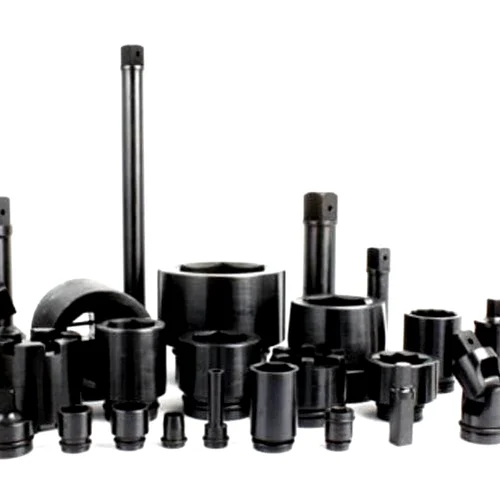Winter used to follow a fairly predictable pattern in many parts of the world. Snow fell at expected times, temperatures stayed low, and winter service teams knew how to plan their season. But things are changing. Climate change is affecting when, how, and how much snow and ice we see. This shift is forcing snow and ice management companies to rethink their strategies, tools, and planning methods.
In this article, we’ll explore how climate change is changing winter weather, and what that means for winter service professionals. We’ll also look at what companies can do to stay prepared in this new and less predictable environment.
What Climate Change Means for Winter Weather
More Unpredictable Storms
One of the biggest effects of climate change is the unpredictability of weather. Snowstorms may now arrive earlier or later in the season. Some areas may experience heavy snowfalls in one year and almost no snow the next. This makes it harder for snow and ice management teams to plan staffing, equipment needs, and materials like salt or brine.
Warmer Winters Overall
In many places, average winter temperatures are getting warmer. This doesn’t mean snow will disappear, but it does change the type of snow and how long it stays. In warmer winters, snow may be wetter and heavier, or it may melt during the day and refreeze at night, creating dangerous ice.
Sudden Temperature Swings
Another change is quick temperature swings. One day it might be below freezing, and the next day it might be above. These changes create challenges like black ice, melting snow that refreezes, and difficult decisions on when to apply salt or plow.
Why Winter Service Companies Need New Strategies
Traditional Planning Doesn’t Work Anymore
Before climate change became such a big factor, many companies could use weather history to plan their season. They could look at past snowfall levels and make fairly accurate predictions. But now, past weather is no longer a reliable guide.
According to insights often shared by the Snow and Ice Management Association, winter service providers must now plan with greater flexibility. Instead of relying only on fixed schedules, companies need real-time data, advanced weather tracking tools, and on-call crews ready to respond to surprise weather events.
Budgeting Becomes More Complex
Unpredictable winters can also create budgeting problems. Some winters may bring extra snow events, which raise labor and fuel costs. Other winters may have mild weather, making it hard to justify the cost of staff and equipment on standby. Many companies now look for contract types that balance these risks, like seasonal flat rates or per-event pricing.
New Tools and Technologies to Meet the Challenge
Real-Time Weather Tracking
Technology is now a big part of managing winter weather. Companies use advanced weather apps and GPS-based monitoring tools to track storms in real-time. This helps teams respond more quickly and adjust their plans during fast-changing weather events.
Liquid Deicers and Brine
Because of the warmer temperatures and quick freeze-thaw cycles, more companies are turning to liquid deicers. Brine can be applied before snow starts to stick, helping prevent buildup and reduce the amount of solid salt needed. This approach is also better for the environment and reduces waste.
Smart Equipment and Sensors
Some modern snowplows and spreaders now come with sensors that track ground temperature, salt application rates, and snow depth. This data helps improve decision-making and prevents overuse of materials. It also helps with documentation, which is important for liability and reporting.
Staffing and Scheduling Adjustments
Flexible Workforce Models
Because storms are less predictable, companies can’t always rely on fixed full-time crews. Many are now building flexible teams with on-call or part-time workers who can be brought in when needed. This approach helps control labor costs while still ensuring coverage during sudden weather events.
Cross-Training Crews
Another smart move is cross-training staff. Workers who help with landscaping or construction in warmer months can also be trained for snow operations. This ensures that companies have a skilled and ready workforce without needing to hire new people each winter.
Environmental Concerns and Sustainable Practices
Reducing Salt Use
Excessive salt use can harm plants, waterways, and roads. With climate change making ice more common, it’s tempting to use more salt. But the trend is now moving toward smarter, more targeted use. Many companies use salt brine, pre-treatment, and better equipment to reduce how much they spread without lowering safety.
Eco-Friendly Equipment
More snow and ice management companies are also investing in cleaner equipment. This includes plows and spreaders with lower emissions and fuel-efficient engines. Some are even exploring electric snow removal tools for sidewalks and smaller areas.
Client Communication is More Important Than Ever
With unpredictable weather, keeping clients informed has become a key part of a strong winter service strategy. Businesses, schools, hospitals, and homeowners all want to know when their properties will be cleared and how the company is responding to fast-changing conditions.
Some companies now send automated service updates through email or text messages. Others use client portals where customers can check service status in real time. This builds trust and helps avoid misunderstandings during challenging weather.
Long-Term Planning and Adaptation
Tracking Performance and Weather Trends
Smart companies keep detailed records of each season how many snow events occurred, how much salt was used, what worked well, and what didn’t. Over time, this data helps companies adapt and improve their strategies, even in the face of changing weather patterns.
Working with Municipalities and Experts
In some regions, snow contractors are working closely with local governments, scientists, and environmental groups to build community-wide winter plans. These collaborations help share knowledge, improve equipment access, and ensure everyone is using best practices to deal with climate impacts.
Final Thoughts
Climate change is making winter less predictable and more complex. For snow and ice management companies, this means the old ways of planning and operating aren’t enough anymore. Flexibility, new tools, better communication, and a focus on sustainability are all key to staying ahead.
By staying informed and adapting strategies to meet the new reality, winter service providers can continue to keep people safe, roads clear, and businesses running even in an unpredictable climate.





The article, 'How Climate Change is Shaping Winter Service Strategies,' provides a chilling insight into the urgent need for adaptation and innovation in winter maintenance operations due to our increasingly unpredictable weather patterns.
The essay compellingly explains how climate change is redefining winter service strategies, necessitating a shift towards adaptive and sustainable approaches to ensure the resilience of cities against extreme weather events.
The evolving nature of climate change is forcing a reevaluation and adaptation in winter service strategies worldwide, demonstrating the need for innovative approaches to ensure sustainable protection against increasingly abnormal weather patterns.
Climate change's impact on winter weather patterns necessitates innovative and proactive strategies in managing snow removal, thereby presenting a significant challenge yet an opportunity for cities to adopt efficient preparedness plans that foster sustainability.
Climate change continues to rewrite the script for winter service strategies, necessitating innovative solutions and ongoing adaptation that aim not just at mitigating its impacts but also enhancing resilience in freezing conditions.
This article effectively illustrates how the ever-evolving phenomenon of climate change is forcing cities and municipalities to innovate their winter service strategies, adopting more adaptable approaches for snow removal and road management in an uncertain future.














